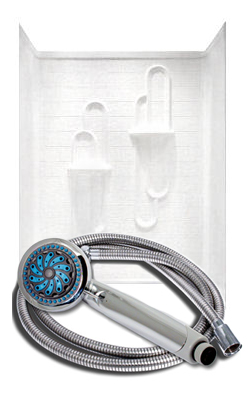
Mobile home skirting does a lot more than just make your home look nice. It keeps pests out, protects your pipes, and helps regulate the temperature inside your home. But let’s be honest—it’s easy to overlook how important skirting really is. Whether you’re installing it for the first time or giving your existing skirting some TLC, small mistakes can add up to big headaches. So, let’s talk about some common skirting mistakes and how you can avoid them.
Why Quality Mobile Home Skirting Matters
Not Thinking Through Your Material Options
One of the first things people get wrong is not looking at all their options when it comes to skirting materials. Mobile home skirting comes in vinyl, brick, stone, and metal, and each has its perks—but they’re not all perfect for every home.
- Vinyl skirting is budget-friendly and easy to install, but it might not hold up as well in rough weather.
- Brick or stone skirting is super durable and gives your home a high-end look, but it’s pricier and more complicated to install.
- Metal skirting is strong and lasts a long time but can rust if it’s not maintained properly.
The last thing you want is to spend time and money on skirting that doesn’t suit your needs. Take the time to weigh the pros, cons, and costs of each option—your wallet and your home will thank you.
Forgetting About the Climate
Believe it or not, where you live should play a huge role in your skirting choice. If you live in a cold climate, insulated skirting can help keep your pipes from freezing and save on energy bills. On the flip side, if you live in a hot, humid area, ventilation is your best friend. Without it, moisture can build up under your home, leading to mold, rot, and all sorts of problems.
Ignoring your local climate is a recipe for disaster. So, before you buy, think about the weather your mobile home skirting needs to handle.
Installation Mistakes (and How to Avoid Them)
Even the best skirting won’t work if it’s not installed correctly. Here are some common slip-ups:
Skipping Accurate Measurements
This one’s easy to mess up. If your panels are too short, you’ll have gaps. Too long? They’ll look messy and won’t fit securely. Take measurements of the perimeter and height of your home in several spots—especially if the ground isn’t perfectly level. Double-check your numbers before you cut or buy anything.
Not Prepping the Ground
You can’t just slap skirting onto uneven or debris-filled ground. If you skip this step, your panels can shift over time, especially if there’s erosion or heavy rain. Take the time to level the ground, clear away any sticks or rocks, and compact the soil. It’s a little extra effort now that saves you a big headache later.
Loose or Wobbly Panels
Improperly secured mobile home skirting can rattle in the wind, shift out of place, or get damaged by animals. Use the right fasteners for your material, and make sure every panel is snug and secure.
Skipping Ventilation
Proper airflow is non-negotiable. Without vents, moisture can build up under your home, leading to mold, mildew, and even damage to your flooring. Most skirting options come with built-in vents like the Vented Deluxe Vinyl Skirting or foundation vents, but you’ll need to make sure they’re spaced evenly and not blocked by debris.
Don’t Forget About Maintenance
Even if you nailed the installation, mobile home skirting still needs regular upkeep to do its job. Here are a few maintenance tips:
- Give It a Once-Over: Walk around your home every few months and look for cracks, holes, or loose panels. Small issues are easy to fix, but ignoring them can lead to bigger problems.
- Keep It Clean: Dirt, grime, and mold can weaken skirting materials over time. Vinyl and metal skirting can be rinsed off with a garden hose, while brick or stone might need a little scrubbing.
- Check Your Vents: Make sure vents aren’t blocked by leaves, snow, or debris. Blocked vents mean moisture can get trapped, and that’s bad news for your home.
- Watch for Pests: Skirting is supposed to keep critters out, but if it’s damaged or loose, it’s an open invitation for pests. Keep an eye out for any unwanted guests.
A little maintenance goes a long way toward keeping your skirting in great shape.
Quick Tips for Mobile Homeowners
Here’s a quick cheat sheet to help you avoid common skirting mistakes:
- Pick the Right Material: Think about your climate, budget, and long-term goals. Not all skirting materials are created equal.
- Measure Twice, Cut Once: Take accurate measurements of your home before you buy or cut panels.
- Prep the Ground: Make sure the installation area is level and clear of debris.
- Don’t Skimp on Ventilation: Proper airflow is key to preventing moisture issues.
- Inspect Regularly: Walk around your home every few months to check for damage and clean your skirting as needed.
- Seal Gaps: Make sure there are no openings where pests or drafts can sneak in.
Mobile Home Skirting Done Right
Mobile home skirting does so much more than you might think—it protects your home, saves you money, and keeps things looking sharp. But mistakes like choosing the wrong material, skipping prep work, or neglecting maintenance can quickly undermine all those benefits.
The good news? A little time, effort, and know-how can make all the difference. Whether you’re installing new skirting or fixing up what’s already there, these tips can help you avoid the most common pitfalls.
Looking for the right skirting to get the job done? Check out Mobile Home Parts Store for durable, affordable options that fit your needs. With the right skirting and a little care, your mobile home will look great and stay protected for years to come.
Tags: mobile home skirting, Skirting, Skirting for mobile home



















